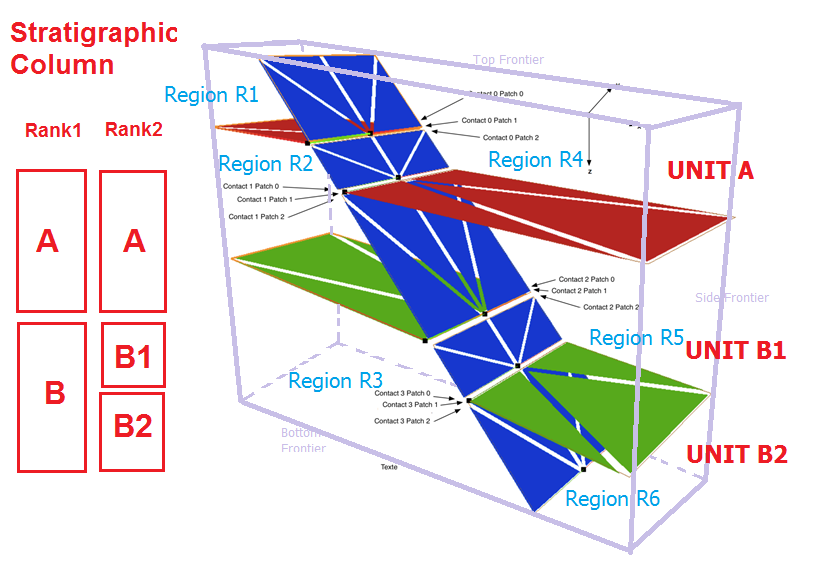9.3.1.3.1 Creating a Stratigraphic Organization Interpretation and a Sealed Volume Framework Representation
| Topic Version | 1 | Published | 09/11/2015 | |
| For Standard | RESQML v2.0.1 | |||
Software E imports EPC_3 and is used to define an interpretation of a volume for our model (Figure 9.3.1.3.1-1).

In Software E, one stratigraphic organization interpretation can be created for each rank of the stratigraphic column. The asset team chooses the rank. In this example, they choose Rank2.
First, we must create the geologic (stratigraphic) units features that are used in Rank2: Unit A, UnitB1, and Unit B2. In the RESQML model, these units are associated with an upper and a lower genetic boundary.
We can also add some interpretation characteristics to these units. For example, Peter was qualifying the Unit A interpretation with a sedimentary siliciclastic composition and Unit B1 and Unit B2 as carbonate composition.
Software E declare as geologic unit features all the stratigraphic unit interpretations that must be identified, which includes Unit_A interp and Unit B interp for Rank1 and Unit_A interp + Unit B1 interp and Unit B2 interp for Rank2. This interpretation constitutes the stratigraphic column, which is attached to Peter's earth model interpretation.
The contact interpretations are defined between these units and follow the rules implied by the deposition mode defined for each stratigraphic unit.
By specifying all these relationships between surface and volume objects, an application can generate a sealed volume framework export, EPC_4, with an earth model interpretation containing a structural and a stratigraphic interpretation with a sealed surface framework and a sealed volume framework (Figure 9.3.1.3.1-2).
